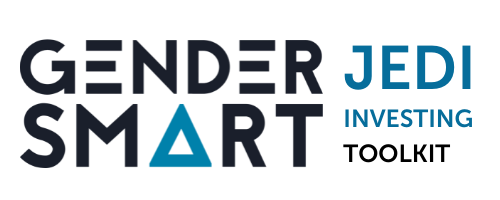Here’s how organizations can put intersectionality to work
Article about building intersectionality into recruitment strategies, making sure people have opportunities to discuss these issues, and an open and empathic style of leadership.
How to reduce bias in your workplace | The Way We Work, a TED series
3 ways to reduce bias at work, according to Just Work co-founders, author Kim Scott and CEO Trier Bryant. (Video)
Guide for General Counsels: Insights into Ethnicity Pay Gap Reporting
Aimed at General Counsels who advise Boards on a regular basis, this guide looks at the legal considerations behind ethnicity pay gap reporting, in particular the data protection and employment concerns, that can become a perceived barrier to publishing these statistics.
Building a Culture of Accountability
Advancing racial equity within your organization requires making accountability a cultural norm.
Is unconscious bias training still worthwhile?
Training can raise people’s awareness of their unconscious biases, but evidence shows that training alone is not effective in changing behaviour. The UK government has already decided to discontinue this kind of programme in its various departments. Frederick Herbert writes that while it is generally accepted that awareness is not a sufficient condition for behavioural change, it is usually necessary. He argues that unconscious bias training can be re-thought of as a foundation upon which other interventions can build.
7 ways companies are advancing racial justice in business
Over the past year, the pressure for companies to act on racial equality has increased. In response, they have started to focus on seven key actions to increase diversity, equity and inclusion (DE&I). These include hiring for DE&I roles and providing anti-bias trainings.
Installment 7: How to Invest for Racial Justice
From Adasina Capital: “After years of being disillusioned with the direction of values-aligned investing, Maya and I decided to create what we couldn’t find – an easy way for people to put their racial and social justice values to work while investing in the public markets.”
Guidance and best practice examples for VCs, private equity and institutional investors
This document has been created by leading investors and professionals within the venture community as a resource for institutional and other investors who, through diversity and inclusion, wish to maximise access to diverse deal flow, and manage their companies and portfolios to optimise return.
Applying an Intersectional Investment Lens Across Gender and Race
Explore how investors might consider both gender and race in their investment analysis, enabling their investment portfolios to uplift women and communities of color more effectively
Building the Social Justice Architecture for Impact Investing
By Millard Owens: “The proposed principles reflect therefore what I have heard directly from impact investors, and from themes emerging from more humane schools of economics and human development. In sum, they speak to establishing the appropriate role of capital in strong partnership with a well-functioning state and active citizenry.”
Power, knowledge and courage: our experience with feminist evaluation
How Kore Global put three (out of many) feminist evaluation principles into practice in this evaluation: power sharing, multiple ways of knowing, and speaking truth to power.
Time to Decolonise Aid: Insights and lessons from a global consultation
This report explores how structural racism manifests itself in humanitarian, development and peace-building work, and envisions a decolonised system that is truly inclusive and responds to their needs.
How to Measure Inclusion in the Workplace
From Harvard Business Review: In an era where companies are paying more and more attention to diversity, equity, and inclusion (DEI), inclusion remains the most difficult metric to track. From new research, Gartner developed the Gartner Inclusion Index to measure what true inclusion looks like across an organization. The authors outline how to use the Gartner Inclusion Index to measure employee perceptions of inclusion, what effective action looks like from leaders, and common pitfalls to avoid.
What is Social Justice Investing?
An explanation of what it means when we talk about “social justice investing”. First, let’s look at each of those three words separately, then put them back together to show how Adasina integrates them to advance social justice beyond existing ESG (environmental, social, and governance) approaches.
GIIN Navigating Impact Project Racial Equity Theme and Framework
The Navigating Impact Project is where the GIIN, together with experts in different investment themes, identify best practices, research, and recommended metrics for each investment theme. The Strategic Goal of Racial Equity includes a research-based overview of the problem and how investments can work toward solutions, an evidence map, a starter kit of metrics that are shown to indicate progress toward that strategic goal, and curated resources that can help practitioners measure and manage their impact most effectively.
A Guide to Investing in First-Time Women and Diverse Fund Managers
This guide from GenderSmart is a tool to help asset allocators and advisors - as well as fund managers - be inspired by the investors leading the way, understand the structural solutions to backing more of these funds and structured vehicles, find deal flow, and understand how to diligence and move capital into these innovative managers. While the guide focuses largely on gender, a JEDI lens can be easily integrated.
The GIIN Racial Equity Theme
GIIN's IRIS+ Racial Equity theme consists of three Strategic Goals:
Shifting Power by Addressing Racial Bias and Ensuring Equitable Representation and Decision-Making;
Shifting the Perception of Risk through Equitable Deal Sourcing, Due Diligence, and Terms;
Increasing Inclusive Capital to Create Equitable Outcomes for Communities of Color (Justice)
These goals have been designed to apply to the full spectrum of investors, and support the intentional integration of racial equity awareness and action in their investment strategies, portfolio decisions, and evaluation of their return on investment.
Financial Services Skills Commission’s Inclusion Measurement Guide
This inclusion measurement guide is split across 4 levels based on the maturity of the inclusion measurement already in place in organisations. There are three types of measurement tools included in the guide: questions to be included in engagement surveys or inclusion surveys to measure inclusion; examples of data tracking which can be built into existing structures; and free text questions which can be included alongside any of the questions.
FSG, PolicyLink, and JUST Capital Launch Corporate Racial Equity Alliance and Release 2021 CEO Blueprint for Racial Equity
2021 CEO Blueprint for Racial Equity—a robust guide designed to help corporate leaders navigate the challenges of racial equity work and tackle systemic racism in all three domains of corporate influence: the workplace, communities, and society.
Increasing Inclusive Capital to Create Equitable Outcomes for Communities of Color
This resource includes an overview of the approach for achieving this Strategic Goal, supporting evidence, core metrics that help measure performance toward goals, and a curated list of resources to support collecting, reporting on, and using data for decision-making.

